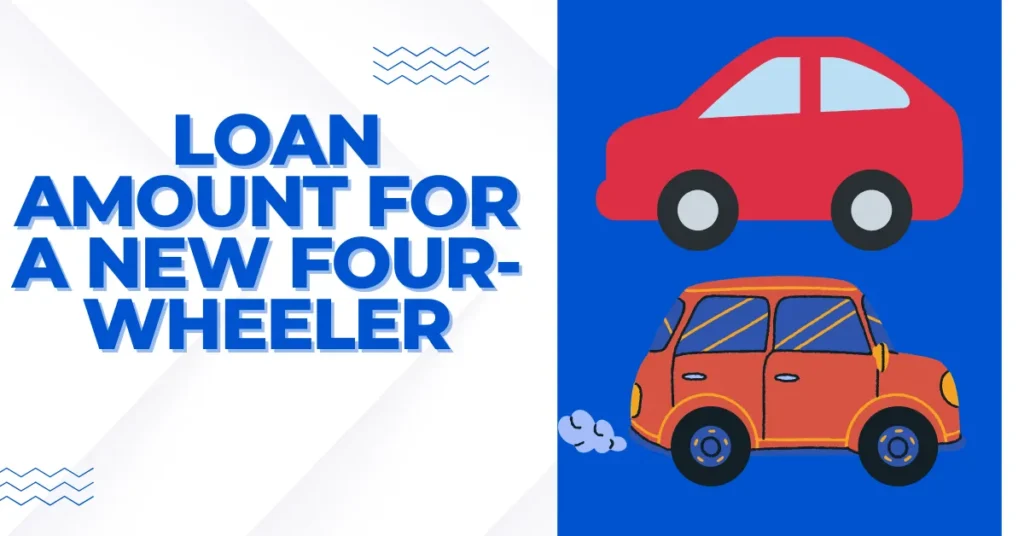Purchasing a new four-wheeler, whether it’s a car, SUV, or truck, often involves securing an auto loan to finance the purchase.
The maximum loan amount you can obtain for a new vehicle depends on various factors, including the lender’s policies, the vehicle’s price, your creditworthiness, and your financial situation.
This guide will help you understand these factors and how they influence the maximum loan amount for a New Four-Wheeler.

Factors Influencing the Maximum Loan Amount for a New Four-Wheeler
Lender Policies
Different lenders have varying policies regarding the maximum loan amount for auto loans. Banks, credit unions, online lenders, and dealership financing arms each have their own criteria.
Vehicle Price
The cost of the new vehicle directly influences the loan amount. Lenders typically finance up to the vehicle’s full purchase price, including taxes, fees, and add-ons.
Loan-to-Value (LTV) Ratio
The LTV ratio is the loan amount compared to the vehicle’s value.
Lenders often finance up to 100% of the vehicle’s value, but some may offer loans exceeding the vehicle’s value, especially for buyers with excellent credit.
This can go up to 120% or more, covering additional expenses like taxes, registration, and insurance.
Credit Score
Your credit score plays a significant role in determining the maximum loan amount.
Higher credit scores typically result in better loan terms and higher loan amounts. Lenders view borrowers with good credit as lower risk.
Debt-to-Income (DTI) Ratio
Lenders assess your ability to repay the loan by looking at your DTI ratio, which is the percentage of your monthly income that goes toward debt payments.
A lower DTI ratio indicates better financial health and can result in a higher loan amount.
Income and Employment Stability
Steady income and stable employment history can positively impact the loan amount. Lenders prefer borrowers who have a consistent income stream.
Down Payment
Making a larger down payment can increase the maximum loan amount you can borrow. It reduces the lender’s risk and shows your financial commitment to the purchase.
Loan Term
Longer loan terms can sometimes result in higher loan amounts, as they reduce the monthly payment burden.
However, this also means paying more in interest over the life of the loan.
Typical Maximum Loan Amounts
Bank and Credit Union Loans
These institutions typically offer loans up to 100% of the vehicle’s value, with some providing up to 120% for qualified borrowers.
Maximum loan amounts can range from $20,000 to $100,000 or more, depending on the vehicle’s price and borrower’s creditworthiness.
Online Lenders
Online lenders may offer competitive loan amounts similar to traditional banks.
They often provide more flexible terms and quicker approval processes. Loan amounts can range from $5,000 to $100,000.
Dealership Financing
Dealerships often work with multiple financing partners and may offer promotional financing with higher loan amounts for specific models or buyers with strong credit profiles.
They can provide loans up to 100% or more of the vehicle’s value.
Manufacturer Financing
Auto manufacturers’ financing arms often have special deals for new vehicles, including higher loan amounts and favourable terms.
They can finance up to the full purchase price and sometimes offer 0% APR for well-qualified buyers.
Recommended Reading
- Finance & Insurance HUB
- The Best Health Insurance in the USA: A Complete Guide
- Comprehensive Insurance for 4-Wheelers: A Complete Guide
- How to Purchase Insurance: A Comprehensive Guide
- How to Purchase Health Insurance and Where to Buy It
How to Maximize Your Loan Amount
- Improve Your Credit Score
- Pay down existing debts, avoid new credit applications, and correct any errors on your credit report to boost your score.
- Increase Your Down Payment
- Saving for a larger down payment can help secure a higher loan amount and reduce the overall loan-to-value ratio.
- Choose a Longer Loan Term
- Opting for a longer loan term can lower monthly payments, making it easier to qualify for a higher loan amount. However, be mindful of the increased total interest cost.
- Provide Proof of Stable Income
- Demonstrating steady employment and consistent income can reassure lenders of your ability to repay the loan.
- Shop Around
- Compare loan offers from multiple lenders to find the best terms and maximum loan amounts available to you.
Conclusion
The maximum loan amount for a new four-wheeler varies based on several factors, including lender policies, vehicle price, credit score, and financial stability.
By understanding these factors and taking steps to improve your financial profile, you can increase your chances of securing a higher loan amount.
Always compare multiple loan offers and choose the one that best fits your financial situation and needs.
Call to Action
Ready to explore your loan options? Start by checking your credit score and researching lenders to find the best auto loan offers available.
Consult with financial advisors or loan officers for personalized assistance.
Drive your dream four-wheeler home with the right financing today!